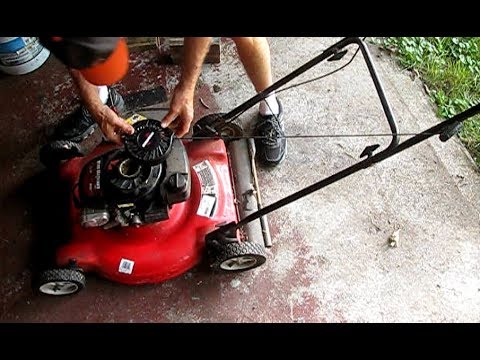10 Ground Cover Plants to Grow in Southern California
Southern California’s fertile soil is ideal for growing a variety of beautiful and sturdy ground covers. Although typically, the annual rainfall doesn’t exceed 15 inches, certain types of ground covers do thrive in the sunny, yet mild climate of Southern California. Ground covers are available in different shades of green and vibrant colors. Take a moment to consider one or more species. Each one listed here is worth a second look.
1. California Poppy
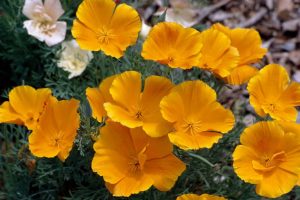
The California poppy is a California native ground cover plant that attracts butterflies, bees, and birds. Its scientific name is eschscholzia californica. The color varieties are mainly orange and light yellow or deep gold; however, red, rose, and cream are also common.
While it’s true that the California poppy’s mature size may vary, it’s not unusual for it to grow up to 2 feet high and 6 inches wide. This perennial requires full sunlight, and it grows fast in well-drained, sandy soils.
Even though the California poppy is drought-resistant, it needs some summer water to remain vibrant annually. It’s best to water new plants thoroughly, but infrequently, such as every few weeks until the root ball and surrounding soil are saturated. Some gardeners wet the root ball and soil prior to planting.
The California poppy can flourish in every season, even when there is less rainfall if watered more frequently after they are established. Growers can accomplish this without overwatering by carefully monitoring the moistness of the soil.
Fall planting season yields blooms in the upcoming springtime for a stunning ground cover garden. Adding mulch is an excellent way to protect the seeds from birds during winter. All year round, thinning the heavy mass of the plant keeps it manageable and less weedy. When plants become flowerless, trimming them back encourages new blooms.
2. Creeping Barberry

The scientific name of the Creeping Barberry is Mahonia repens. The California native is fire-resistant and draws butterflies, bees, and birds, which enjoy eating the plant’s blue fruit. The Creeping Barberry’s leaves resemble holly. They are bluish-green with a few light orange or pink leaves mixed in. Small yellow flowers bloom from April to July.
The Creeping Barberry shade ground cover shrub has a high drought tolerance and grows in well-drained, rocky, or sandy soils. Extreme heat and dry winds may harm this perennial; however, it thrives in healthy soil and is very cold tolerant. This evergreen ground cover can spread up to 3 feet high and wide. Environments for consideration include hills way above sea level and open woods.
3. Dymondia
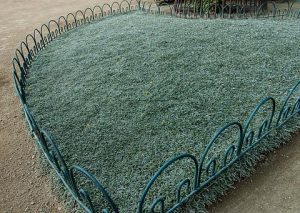
Dymondia, also referred to as Dymondia margaretae, is resistant to fire and drought. The showy plant is widely known as the “Silver Carpet” because of its recognizable silver and green color mix. Dymondia beautifies slopes and provides a cool shade because it spreads low and wide. The colorful ground cover grows up to a height of 3 inches and spreads up to 2 feet.
This perennial’s flowers resemble yellow daisies. Dymondia thrives in well-drained soil that is sandy, rocky, or loam. It will tolerate heat, as well as early winter temperatures above 28 ℉.
Other than ground covering, top uses for Dymondia include containers, patios and pathways, rock gardens, and courtyards. Dymondia tolerates rocky soil, salt, and deer. Its low maintenance is mainly due to its low water requirement and height.
4. Rockrose
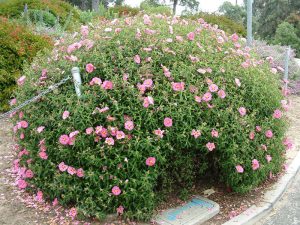
Rockrose is a fire-resistant evergreen shrub. It makes a nice plant covering for slopes. Its general scientific name is Cistus. There are different species of Rockrose with a host of varied scientific names, but all bloom pink, blue, or white flowers. The Cistus monspeliensis, is a popular species of Rockrose.
The plant features small showy flowers and small, dark green leaves. Cistus plants require full sunlight, dry climates, and sandy well-drained soils. Rockrose grows up to 1 foot high. This may vary because it depends on the soil. Dry soils produce smaller spreads. By contrast, moist soils return larger spreads and taller plants.
Cistus plants such as Rockrose have the flexibility to grow in containers in the winter or as an annual or perennial in the summer. Although Rockrose is low maintenance, pruning is an important task to do each year. Growers encourage the plant to return healthy blooms and foliage when they remove about 6 inches of the foliage before the growing season.
5. Bougainvillea
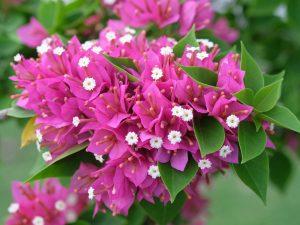
Bougainvillea is a broadleaf evergreen ground cover with thorny stems and shiny leaves. Leaf colors may be green, light pink, purple, deep burgundy, red, magenta, or various shades in between. Also commonly known as the paper flower, Bougainvillea attracts songbirds, butterflies, and bees.
Bougainvillea plants thrive in dry climates and are drought-resistant. However, until it is established, growers should water the plant well, and then let it dry out before watering it again. Bougainvillea requires at least six hours of direct sunlight and grows up to 20 feet high.
Hot weather isn’t a problem for Bougainvillea. When the temperature gets to 100 ℉, it can take the heat. The plant requires more water than some other drought-resistant plants. Locations where there is at least 25 inches of rainfall, enable the ground cover to reach its potential. That said, Southern California remains a good geographical location for Bougainvillea because of the warmer, dryer weather conditions.
Planting a Bougainvillea ground cover is a great way to manage out-of-control weed growth on large hillsides. It is also appropriate for places that are hard to access such as steep slopes. It makes a wonderful border, barrier, and hedge too. In urban areas, the ground cover’s beautiful flowers add interest when planted on commercial or residential structures. Rooftops, near fences, and arbors are some additional examples of their diversified usage.
6. Blue Grama Grass
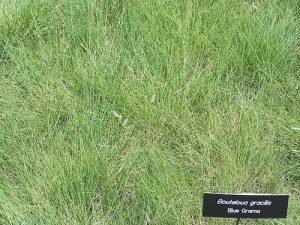
This native Southern California prairie grass called Blue Grama is known for its low-maintenance qualities. Blue Grama’s watering requirements are just once a week from late spring to mid-fall. Southern California’s rainfall is perfect for the Blue Grama because it prefers environments where there is limited rainfall of up to 15 inches, but at least 8 inches annually.
The scientific name for Blue Grama grass is Bouteloua gracilis. Blue Grama’s blades are small and narrow and its flowers start to bloom around July. This ground cover can grow up to 20 inches tall in sandy, gravelly, high-lime content, or rough, well-drained soils. Growers might not need to mow Blue Grama grass except once or twice annually. If weeds appear, mowing more frequently is the best way to control their growth.
Blue Grama enjoys a non-competitive plant space. Taller plants that block its view of the sun will cause the plant to wither. Uses for Blue Grama include livestock grazing and preventing or at least lowering the effects of sheet and wind erosion in susceptible areas.
7. Phyla nodifora
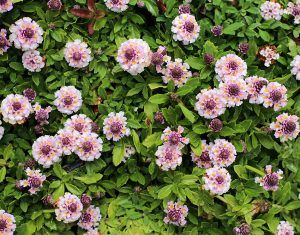
Phyla nodifora is native to Southern California and tropical regions. Phyla nodifora also goes by the name of creeping Charlie, frogfruit or fogfruit, and Capeweed. This evergreen ground cover is drought-resistant and used as a lawn substitute. It is low maintenance since it only requires once-weekly watering between May and October after it is established.
The plant features pale green leaves and small flowers. This ground cover grows up to 3 inches high. Because it forms into dense mats, it makes an excellent turf grass replacement and planting between stepping stones. P. nodifora enjoys direct sunlight; although it can tolerate some shade. Sandy loam, which is a mixture of sand, clay, and silt, offers satisfactory drainage.
P. nodifora is an invasive ground cover. It grows very fast and many consider it to be a weed. It can handle some dry conditions, but moist environments help the plant spread and form into dense mats. Another benefit of P. nodifora is that it tolerates salt found in the air.
Its flowers consist of a dark purple pistil (center) and lighter pink, pale purplish petals that bloom between spring in May and mid-fall around October. Butterflies enjoy P. nodifora’s nectar. In long periods of cold weather, P. nodifora’s flowers will discolor, turning dark purple. However, when the weather gets warmer, they often bounce back.
8. Blue Rug Juniper
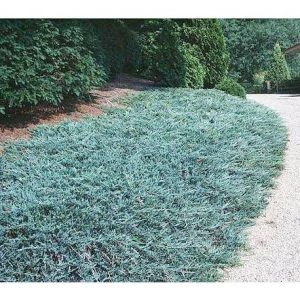
The scientific name of the Blue Rug juniper is Juniperus horizontalis Wiltonii. This low ground cover shrub reaches a height of between 4 to 6 and a width of 5 to 6 feet.
Blue Rug is tolerant to wind, salt, and drought. In addition, this juniper stands up well to cold weather. Juniper plants, in general, require moist soil continuously. This is where Blue Rug differs from other species of junipers. Whether the soil is dry, sunny, on a slope, or all three, Blue Rug will adapt to any of those conditions.
It’s easy to identify Blue Rug Juniper. Its dense branches and scale leaves grow flat in one direction, and its leaves are blue and silver-gray. This juniper species needs direct sunlight for at least 6 hours per day and good soil drainage.
Bees are fond of Blue Rug. And sometimes web-making can occur when spiders make their home in the ground cover shrub. To counter this, growers should spray down the plant when they see webs forming. Small landscapes in close proximity to building structures are perfect for Blue Rug because of its limited spreading.
9. Ground Morning Glory
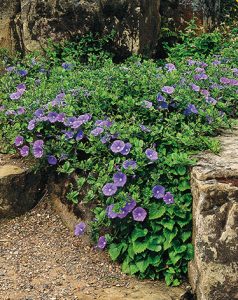
The scientific name for Ground morning glory is Convolvulus sabatius. Other morning glory plants may have different scientific names based on their species. Even so, they all belong to the same family of morning glory plants.
This plant grows to about 18 inches tall and up to 3 feet wide depending on the cultivation. The ground cover features small, gray leaves and vibrant blue blooms with a touch of lavender. Blooms can also be purple or even a combination of colors including blue, white, and pink. Common uses for Ground morning glory are rock gardens and desert oasis landscaping.
Ground morning glory is drought-resistant. Quick draining is essential, so sandy soils and soils containing gravel work best. Ground morning glory grows hardiest in full sunlight but can tolerate partial shade and low temperatures to around 15 ℉.
10. California Cranesbill
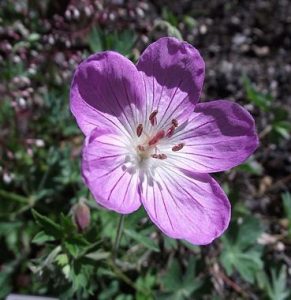
Cranesbill is another name for perennial geraniums. Perennial geraniums have many different names aside from cranesbill. Wild geranium, wood geranium, spotted cranesbill, and alum root and variations of those names based on the specific plant characteristics.
The California cranesbill’s scientific name is Geranium californicum. The fruit it delivers resembles a crane’s bill; therefore it is affectionately called cranesbill for easy identification.
This ground cover displays pink and purple blooms in early summer around June and July. It grows up to 3 feet high. Unlike other ground covers recommended for Southern California, the California cranesbill remains healthiest in damp soils. Furthermore, instead of full sun, partly shaded areas may fulfill their light requirements.
In Southern California ground cover plants may be the solution to reducing the region’s water usage. Ground covers are low maintenance because they require less watering than many other plants. It’s also one of the most affordable ways to turn anyone’s dream of a beautiful landscape into a reality. Ground covers beautify outdoor spaces in both urban and suburban settings. While some ground covers do well with partial shade, most need full sunlight, and all require good soil drainage. Southern California provides the perfect environment for growing ground covers successfully.
FAQs on Southern Ground Cover Plants
- What ground cover plants are drought-tolerant and suitable for full sun in Southern California? California Poppy, Dymondia, and Bougainvillea are excellent choices. California Poppy offers vibrant orange and yellow flowers, Dymondia presents a “Silver Carpet” effect, and Bougainvillea is a broadleaf evergreen with thorny stems and various colorful flowers. All three are drought-resistant and thrive in full sunlight.
- Are there drought-tolerant ground cover plants suitable for shaded areas in Southern California? Creeping Barberry is a great option for shaded areas. It is well-suited for areas with high drought tolerance and well-drained, rocky soils.
- What are some Southern California ground cover plants that are both attractive and drought-resistant? Ground Morning Glory and Blue Grama Grass are aesthetically pleasing and drought-resistant. Ground Morning Glory features vibrant blue blooms and is suitable for rock gardens. Blue Grama Grass, a low-maintenance prairie grass, blooms in July and is ideal for areas with limited rainfall.
- Can you recommend drought-tolerant ground cover plants for Los Angeles? Phyla nodifora (Creeping Charlie or Frogfruit) is a great choice for Los Angeles. This evergreen ground cover is drought-resistant, requires minimal maintenance, and forms dense mats, making it an excellent lawn substitute.
- What are some Southern Living ground cover plants for Southern California? The California Cranesbill (Geranium californicum) is a suitable choice for Southern Living. With pink and purple blooms in early summer, it grows up to 3 feet high and thrives in damp soils, making it an excellent option for Southern California landscapes.

